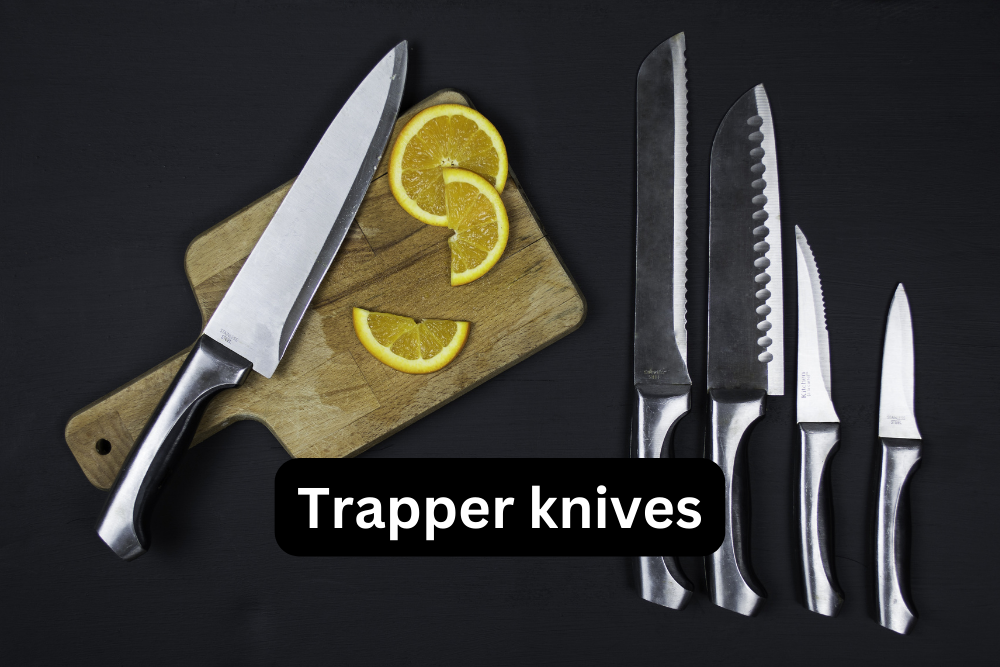Trapper knives have long been a staple in the world of pocket knives, cherished for their versatility, durability, and timeless design. Whether you're an outdoor enthusiast, a collector, or someone who appreciates a reliable everyday carry (EDC) tool, trapper knives are a fantastic choice. In this guide, we’ll explore the history of Trapper knives their unique features, common uses, and tips for maintaining them to ensure they last a lifetime.
The History of Trapper Knives
Trapper knives trace their origins back to the early 19th century, when fur trapping was a thriving industry in North America. These knives were designed to meet the specific needs of trappers, who required a versatile tool for skinning animals, cutting ropes, and performing various tasks in the wilderness.
The classic trapper knife typically features two blades: a clip point blade and a spey blade. The clip point blade is ideal for precision tasks, while the spey blade, with its rounded tip, was originally designed for skinning animals without puncturing the hide. Over time, trapper knives became popular not only among trappers but also among hunters, farmers, and outdoor enthusiasts.
Today, trapper knives are celebrated for their historical significance and practical design, making them a favorite among knife enthusiasts worldwide.
Key Features of Trapper Knives
Trapper knives are known for their distinctive design and functionality. Here are some of the key features that set them apart:
1. Dual Blades
The most defining characteristic of a trapper knife is its two blades: the clip point and the spey blade. This combination allows users to tackle a wide range of tasks with ease.
2. Compact and Portable
Trapper knives are folding knives, making them easy to carry in a pocket or pouch. Their compact size makes them a convenient EDC option.
3. Durable Construction
High-quality trapper knives are made from robust materials such as stainless steel or carbon steel for the blades and durable handles like wood, bone, or synthetic materials.
4. Timeless Aesthetic
With their classic design and often ornate handles, trapper knives are not only functional but also visually appealing, making them popular among collectors.
Common Uses of Trapper Knives
Trapper knives are incredibly versatile, making them suitable for a variety of tasks. Here are some of the most common uses:
1. Hunting and Skinning
The spey blade is specifically designed for skinning game, while the clip point blade can be used for precision cutting and cleaning.
2. Camping and Outdoor Activities
From cutting rope to preparing food, trapper knives are a reliable tool for camping, hiking, and other outdoor adventures.
3. Everyday Carry (EDC)
Their compact size and dual blades make trapper knives an excellent choice for everyday tasks like opening packages, cutting string, or even light food prep.
4. Collecting
Many knife enthusiasts collect trapper knives for their historical significance, craftsmanship, and aesthetic appeal.
How to Choose the Right Trapper Knife
With so many options available, choosing the right trapper knife can be overwhelming. Here are some factors to consider:
1. Blade Material
Stainless steel blades are resistant to rust and require less maintenance, while carbon steel blades are known for their sharpness and durability.
2. Handle Material
Choose a handle material that suits your preferences and needs. Wood and bone handles offer a classic look, while synthetic materials like G-10 or Micarta provide added durability.
3. Size and Weight
Consider the size and weight of the knife, especially if you plan to carry it daily. A smaller, lightweight knife may be more comfortable for EDC.
4. Brand and Quality
Opt for reputable brands known for their craftsmanship and quality, such as Case, Buck, or Victorinox.
Maintaining Your Trapper Knife
Proper maintenance is essential to keep your trapper knife in top condition. Here are some tips:
1. Regular Cleaning
After each use, clean the blades with warm water and mild soap to remove dirt and debris. Dry thoroughly to prevent rust.
2. Sharpening the Blades
Use a sharpening stone or honing rod to maintain the sharpness of the blades. Regular sharpening ensures optimal performance.
3. Oiling the Joints
Apply a small amount of knife oil to the pivot points to keep the blades opening and closing smoothly.
4. Proper Storage
Store your trapper knife in a dry place, preferably in a sheath or pouch, to protect it from moisture and damage.
Conclusion
Trapper knives are more than just tools; they are a testament to craftsmanship, history, and practicality. Whether you're using them for hunting, camping, or everyday tasks, these knives offer unmatched versatility and reliability. By choosing the right trapper knife and maintaining it properly, you can ensure that it remains a trusted companion for years to come.
From their humble beginnings in the hands of fur trappers to their status as a beloved EDC tool, trapper knives have earned their place in the world of cutlery. So, whether you're a seasoned outdoorsman or a knife enthusiast, a trapper knife is a worthy addition to your collection.




